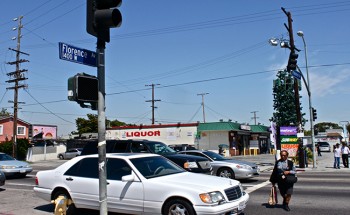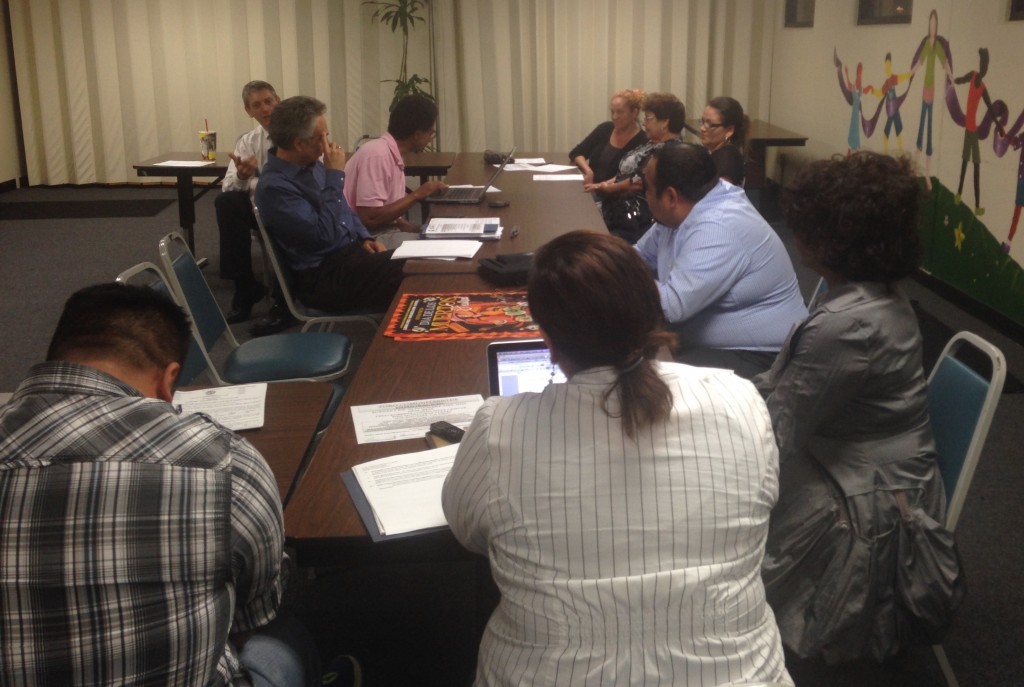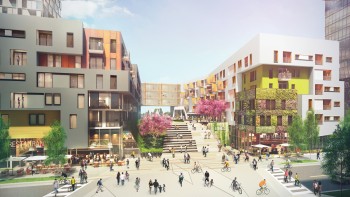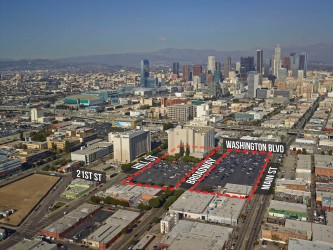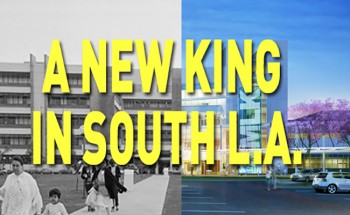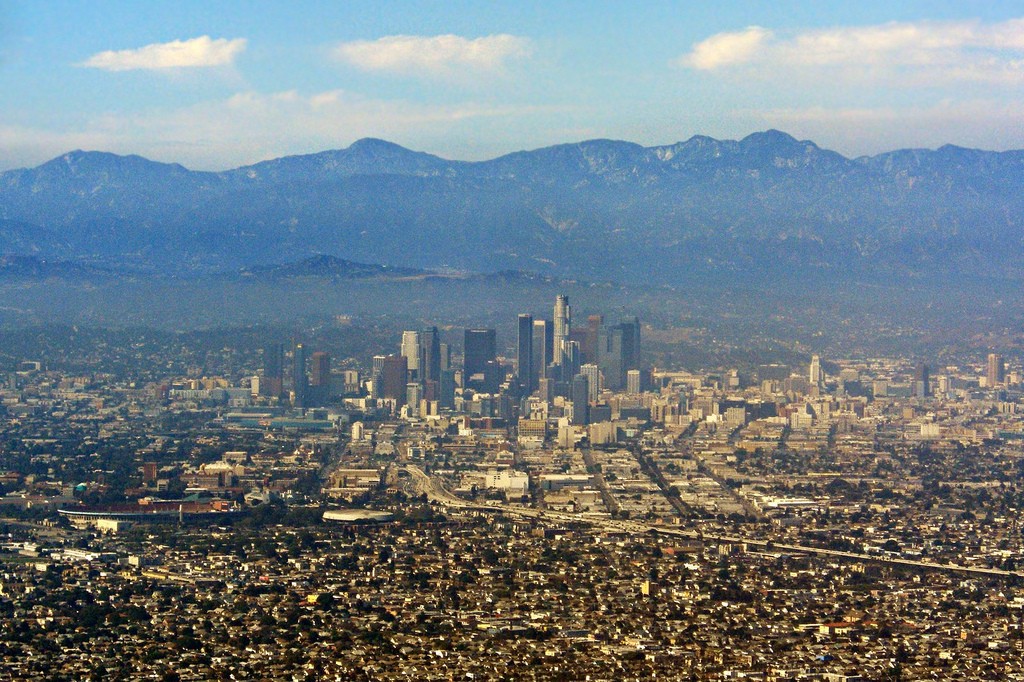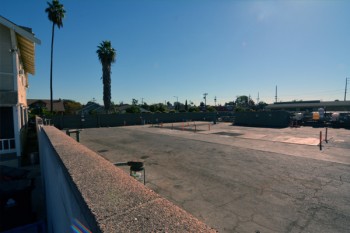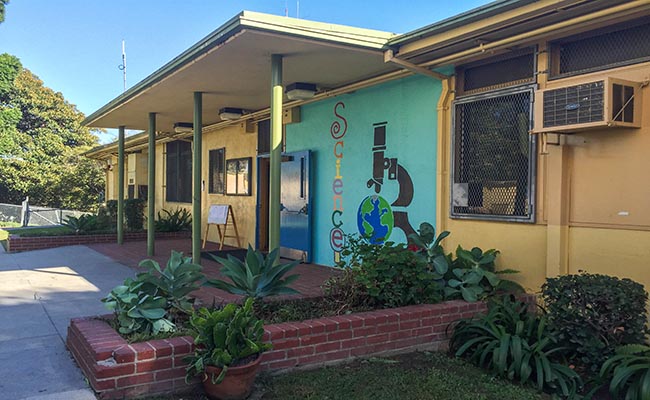
Mid-City’s Prescott School of Enriched Sciences is the only school that feeds directly into the Los Angeles Center for Enriched Studies. LACES is one of the top schools in the state. | Caitlyn Hynes, Intersections South L.A.
Four weeks into the school year, Ellen Hume got the call she had hoped wouldn’t come. Her daughter Elena, 10, had been taken off the waitlist and accepted into Mid-City’s Prescott School of Enriched Sciences.
Like many parents in the Los Angeles area, Hume had been applying for magnet schools since her daughter was in second grade. When Hume received the call, she was happy with Elena’s then-current elementary school, Synergy Charter Academy, and didn’t necessarily want her child to go to Mid-City.
Yet, for Hume and many other parents, the appeal of Mid-City is not Mid-City itself, but the fact that it is the only direct feeder school for the Los Angeles Center for Enriched Studies.
LACES, as it is better known, is the highest ranked school within the Los Angeles Unified School District according to U.S. News and World Report. In 2015, the school had 3,247 applications for 224 open spots. That admission rate is less than 7 percent—more selective than UCLA that same year.
To ensure a child’s admission into LACES, some parents have decided to apply to Mid-City in their child’s later elementary school years. Their year at Mid-City is simply a means to an end, something 10-year-old Elena herself is aware of.
“I think it will be worth it to switch from Synergy to Mid-City to get into LACES. If I had a choice I would choose Synergy and LACES but I know that’s kind of impossible,” she said.
Phil Placenti, who must weigh the educational future of his two daughters, said the reliability and success of LACES are what has drawn their family to the school.
“It has an established school culture that is healthy, it offers a wide range of classes and clubs, and impressive numbers of LACES students go to good colleges,” Placenti said. “LACES isn’t perfect, but it is consistently strong, and has been for a long time.”
LACES also offers sixth through 12th grade, meaning if a child gets in as a sixth grader, the parents no longer have to play the magnet points game.
The fact that Mid-City offers families the chance to matriculate directly into LACES, a solid, steady and reliable school, means that parents whose children have been offered admission into Mid-City have to carefully weigh their options.
If they accept, children may be attending a lower-performing school in a far-away neighborhood. If they decline, they will lose all of their magnet points – a disaster for upper-elementary school students preparing for the middle school magnet application process.
“It’s the only system where you’re applying, and find yourself hoping you don’t get accepted,” said Jolene Hjerleid, whose daughter was accepted to Mid-City in 2012 and is now an eighth grader at LACES.
Hume eventually decided to send Elena to Mid-City. because doing so would set her up for the next six years of her academic career.
Read More: Los Angeles magnet school shows off successful STEM and AP program
“Even though we loved Synergy, Mid-City is a feeder school for LACES,” said Hume. “We decided to send her to Mid-City for one year because she would be set up for the rest of junior high and high school.”
Amy Levinson also saw Mid-City as merely a stepping stone to LACES. When her son was accepted into the elementary school the day before starting fifth grade, she decided to take the spot to guarantee his place at LACES.
“We agreed within the day that we were going to do it because it would solve the middle school and high school problem. So it was worth it for him to have upheaval for a year. But he was leaving his school again, where he was thriving,” Levinson said.
The magnet points system and lack of streamlined school experience in LAUSD means that parents are constantly thinking ahead and planning for the future.
“I don’t know how often I’m in conversations with people at parties or whatever and we’re always asking about, ‘Where does your kid go to school? How’d they get there? What are you going to do next year?,” Hjerleid said. “There’s not a logical place for the kids to feed into next year.”
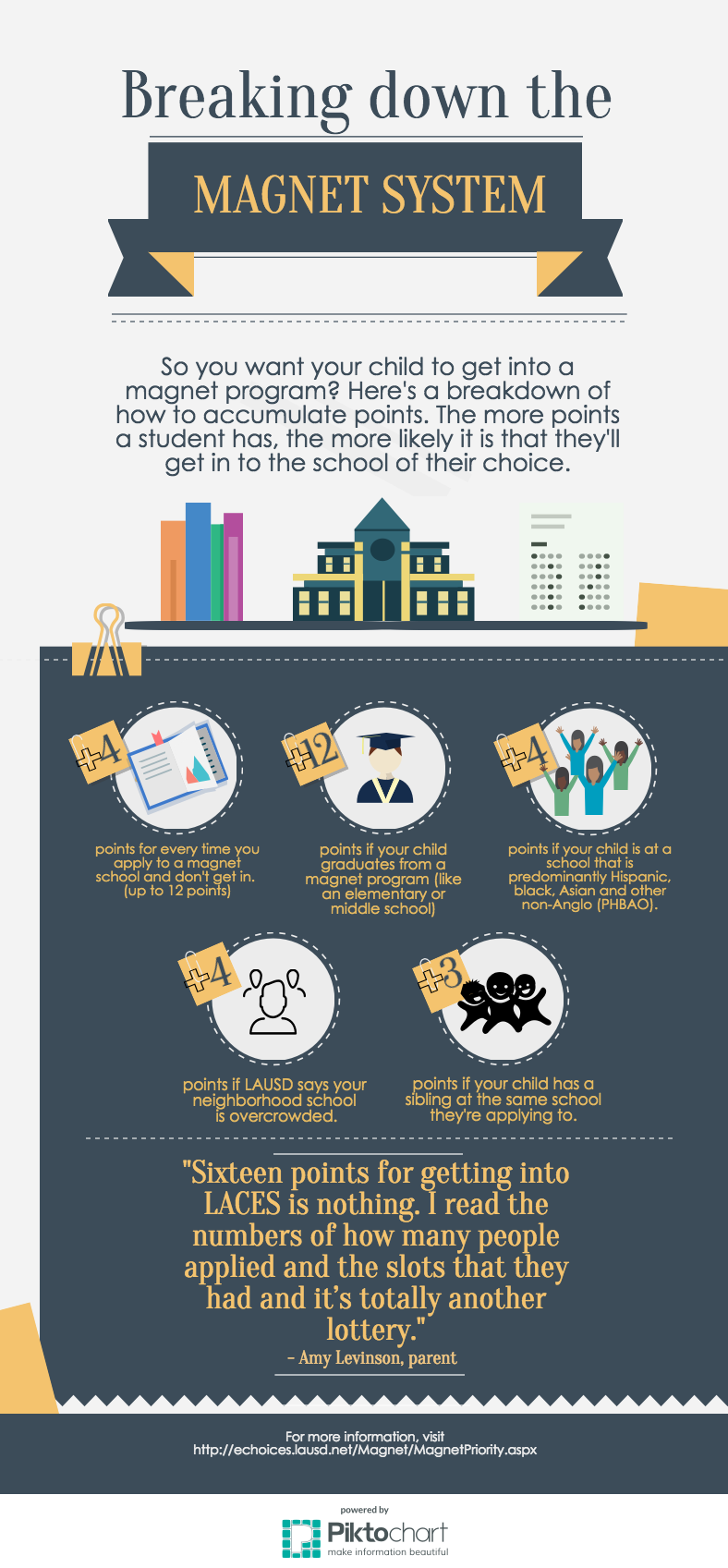 The stakes for magnet points got higher in 2011 when LACES officials made Mid-City their only feeder school. The decision meant that parents didn’t have to rely solely on one application year, but could automatically matriculate to LACES if they went to Mid-City. Students are also significantly more likely to get into Mid-City. Last year they had 189 applications for 61 spots, and a 32 percent acceptance rate—more than four times as high as LACES
The stakes for magnet points got higher in 2011 when LACES officials made Mid-City their only feeder school. The decision meant that parents didn’t have to rely solely on one application year, but could automatically matriculate to LACES if they went to Mid-City. Students are also significantly more likely to get into Mid-City. Last year they had 189 applications for 61 spots, and a 32 percent acceptance rate—more than four times as high as LACES
Hjerleid‘s daughter was in one of the first classes at Mid-City to be directly admitted to LACES. When the change was announced, she says there was some backlash among parents.
“Everyone was a little surprised when Mid-City was chosen as a feeder school. I think people were like, why is this little unknown elementary school being chosen for the magnet?” she said.
LAUSD was unavailable for comment on why Mid-City was chosen as the sole feeder school for this article.
Though Mid-City has consistently improved its API score over the past five years, rising from 761 in 2008 to 801 in 2013, only 51.9 percent of students were at or above proficient in English, and 57.2 percent in math, according to its 2013 Adequate Yearly Progress report.
In contrast, Synergy Charter Academy, where Hume’s daughter Elena attended from kindergarten to fourth grade, had an API of 907 with 75 percent of students proficient in English and 88.9 percent in math.
When Hjerleid and her husband decided to transfer their daughter to Mid-City in 2012, they left West Hollywood Elementary School, which had a 932 API score that year and an 83.5 percent proficiency in English and 85 percent proficiency rate in math.
The qualitative aspects such as Mid-City’s disorganization and lack of academic rigor, however, are what the parents interviewed focused on.
Levinson, whose son also spent a few years at West Hollywood, was disappointed with Mid-City’s academic standards.
“It felt like he was taking a huge step back academically. The math was not hard for him. He didn’t have vocabulary all year,” said Levinson. “Just things that felt like they were a given; like vocabulary and spelling tests. I felt like his preparation [for LACES] came at West Hollywood.”
Hjerleid and her husband also wondered if it would be worth it to transfer to Mid-City. The academic expectations, she said, were not as high as she believed were necessary. “And that was disappointing, but we were prepared for it,” she said.
Hjerleid and Hume both confirmed that they accepted their spot at Mid-City not because they felt it would be academically challenging for their children, but because they knew if they did not accept, they risked losing their chance at LACES permanently.
Read More: Crenshaw High’s magnet conversion and Baldwin Hills families
Placentis’ oldest daughter Analisa is a sixth grader at LACES, despite the fact that she didn’t get into Mid-City last year. When Analisa was put on Mid-City’s waiting list, he said it was a relief. But she was admitted into LACES this year with 16 magnet points, which is generally agreed to be the minimum number of points for LACES.
Nevertheless, the Placentis understood how hard the decision would be.
“Going to a school like Mid-City for a year or two in order to know that your child will have a solid middle school option can be a difficult thing to pass up. For our older daughter, we applied for a spot at Mid-City and prayed she wouldn’t get it,” said Placenti.
Hjerleid says they wouldn’t have changed anything regarding the decision they made for their daughter’s education.
“We also thought our daughter was the kind of student and personality that could weather that pretty well and maintain a sense of academic rigor and studying and all of that even if the expectations were lower than where she had come from,” said Hjerleid.
Despite the different academic expectations, some parents believe that one-year at Mid-City will be regained in value many times over while attending LACES.
Hjerleid summed it up: “Now we’re done, basically. . . it feels great to know that they’re both there at LACES, sixth through 12th grade. Now we just need to worry about college applications in three or four years.”









